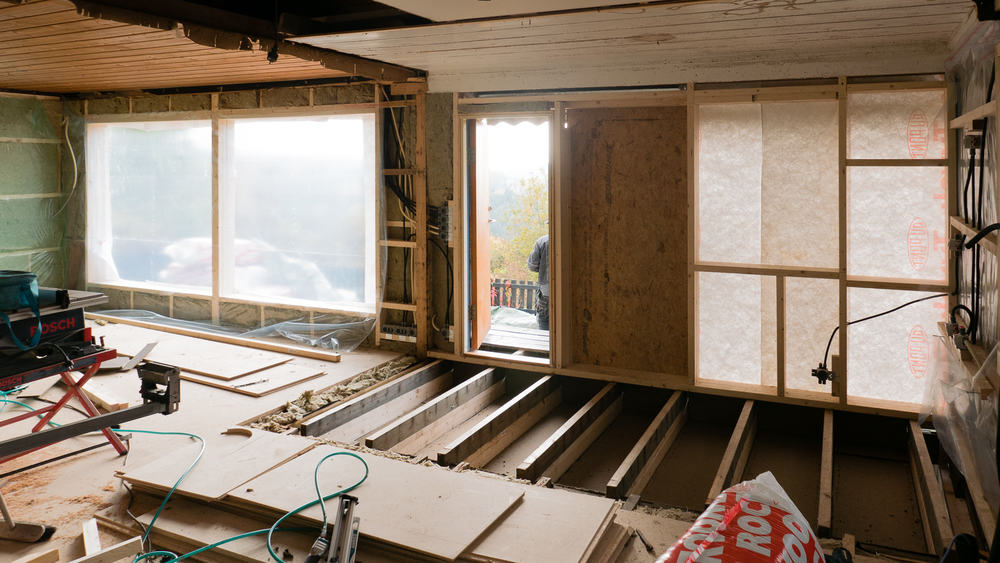Words and terms like romance, ambiance, and nostalgia have been commonly associated with timber and log homes. They will provide you with a cozy and homely feel making it the ultimate homesteaders’ dream.
Let us for a second and think about what it truly takes to build a log home. Before you go hacking down trees, you need to have all the information and data in advance. There are several factors that you need to consider before you can begin building a log home.
Strictly following specific guidelines as well as other critical elements will enable you to construct your homes seamlessly and efficiently. To get the best and positive results, you need to plan yourself accordingly.
The need to have appropriate and prior knowledge and techniques is essential when constructing a log home, there is a lot that goes into building home homes in terms of ecological and environmental factors so it’s crucial to have relevant information. In this article, we are going to highlight some of the vital points that you need to consider when constructing a log home.
Having a clear understanding of local environmental laws
Log homes are supposed to be built in areas far away from the cities, it’s a requirement by the law that these homes be constructed in environmentally sensitive locations like foothills of mounts or wood vicinity.
Local governments have specific rules and regulations when it comes to building such houses, log homes are usually eco-friendly but they can also have a negative impact on the environment due to electricity consumption, firewood burning, and using other households’ equipment’s just to mention a few.
Before you can commence construction, you are required by the law to get all the necessary clearance and statutory requirements. The laws must be strictly adhered to and implemented and failure to do so might result in fines and penalties.
It’s very important to adhere to all the local rules and regulations regarding the building of log homes, the height of log homes, the materials used, and other vital requirements and rules.
Checking the soil quality
After you’ve laid down all the necessary plans of building your log homes, one factor that you need to pay close attention to is the soil quality of where your home is going to be built. The soil quality must be checked by an expert.
Poor soil quality will affect the strength as well as stability of your log home, it will significantly hamper its longevity and lifespan, it can also be quite hazardous to construct a log home in a location that’s not suitable for building or construction.
It’s always recommended that you engage an expert who will thoroughly and extensively check strength, mineral composition, nature of the soil amongst other things before beginning construction of your home. Checking the soil quality is an important undertaking that will ensure the overall safety of your family as well as the house.
Identifying proper timber
A log home can be built with a wide variety of woods, some of the woods are actually of excellent quality that will ensure your house will last for years to come. But other types of woods are of poor quality that will make your home last for less than five years.
Basing on your budget as well as the availability of woods, you should always go with the best option. Quality timber is very expensive, but what I have come to learn never compromise on quality as it can be quite costly in the long run.
Good wood is resilient to adverse weather conditions, thus providing your log home with robust strength and resilience. I mean who doesn’t want a long-lasting home, everybody right!
Its good quality will mean that there is less wear and tear translating to low maintenance and repair cost which is quite economical in the long run.
Construction cost
This is the question that is on everybody’s mind, are log homes cheaper to build? Well, because a log home building tends to have customized features they cost more. Handcrafted homes build by log specialists tend to be a bit expensive compared to the ones whose parts are manufactured.
It’s always recommended that if you can produce or build some parts then you should do it to reduce the overall construction cost. Land cost and mortgage rates are usually affordable but the same cannot be said for loan qualification.
To qualify for a loanit’s tough to ask as you have to have a high credit score, construction loans are a bit different compared to conventional loans. So, do prior research; your credit score will also have a direct impact on your interest rates.
For a finished log home, it can range anywhere between $125 to $400 per square foot.A recent study carried out by Nation’s Building News states that 60% of the overall cost is spent on labor. So, talk with your builder to see if you can do minor labor to lower the overall cost.
Researching on weather conditions
The longevity of your log home is also dependent on the weather conditions in which its build on. The weather can impact the life and strength of your structure, you must use a material that is resistant to adverse weather conditions.
As a new builder, you will need to assess the conditions before you begin construction but also the climatic conditions of all seasons. In some places, you might find that the winter is very harsh but the summers are quite pleasant.
So, it’s always advisable that you get a clear picture of the season and climatic conditions throughout the year to be able to choose good materials as well as a better type of wood. You will also have a clear idea of the type of maintenance schedule that you’ll need to adhere to.
Maintenance
Log homes require a lot of care and maintenance compared to conventional homes, with time logs tend to shift and expand. But the good thing is some of these issues can be addressed during the initial construction process, so you must hire a well experienced and reputable builder.
So before committing yourself, you need to know what you are getting into. Like for example, logs are mostly affected by pests such as termites and carpenter bees. Decay is also another real threat, remember all the above-mentioned issues are not covered by insurance companies.
The best solution is purchasing insecticides treated and waterproof logs, this will significantly reduce your overall maintenance cost as you’ll be able to address all the problems that might arise beforehand.
Access to towns or cities
Log cabins are mostly located in remote areas, but it’s equally to choose a log home location that is not remote or too far from the city. In the case of a medical emergency, you should be able to reach the hospital in a fast and timely manner.
Additionally, amenities are very important; thus, being near plenty of eateries and enjoyment joints is very vital. Having close access to these types of places is very convenient.
Insurance
When it comes to timber and log homes, they are normally insured differently compared to traditional housing. But the catch is; only big insurance firms can insure log homes.
Some of the most popular insurance companies that will sufficiently cover your log homes include USAA, Met Life, and State Farm. Always choose an agent who is well-versed with insurance of log homes.
But be always be ready to pay top dollar for your log homes, but it will be worth it as you’ll be fully covered from any damage or defects giving you complete peace of mind.
Construction
When it comes to the construction of a log home, there are mainly three types of construction. One of the most popular methods is working with a manufacturer who will cut down the logs and a contractor who will build your home.
The second option is being your general contractor or hiring a few personnel who will assist you in construction. This method gives you more freedom and independence, but it can also be a bit limiting as you’ll not have the proper experience.
The third and final option is doing everything yourself, you will do most of the labor yourself. Your skills and budget will determine how your home will look like. If you go with the third option, you’ll need to consult somebody who is experienced enough.
Electricity supply
A log home is usually located in a serene and remote environment, so you’ll need an uninterrupted supply of electricity to power all your electronics and other equipment. If you live in a place with low temperatures during the winter, you’ll need a heater.
Additionally, also ensure the log home is located with a constant supply of water, ensure the water comes from a clean place free from pollutants.
Final word
Several factors will affect your life when you decide to live in a cabin home, never rush into anything. You must have the proper and correct information before you begin the construction of your log home. We have delved deeper into vital factors that you need to know or address before building your log cabin so that you will have a happy and comfortable life. Cheers!
My name is Eugene Thornhill. I'm an outdoor enthusiast who loves nothing more than being one with nature. I've lived in numerous outdoor homes and even constructed my own. Living off-grid is something I'm very familiar with, more so than living in the city. For many years I've dealt with the many problems of living off-grid. It's time to pass on my knowledge through Cabinguides.


